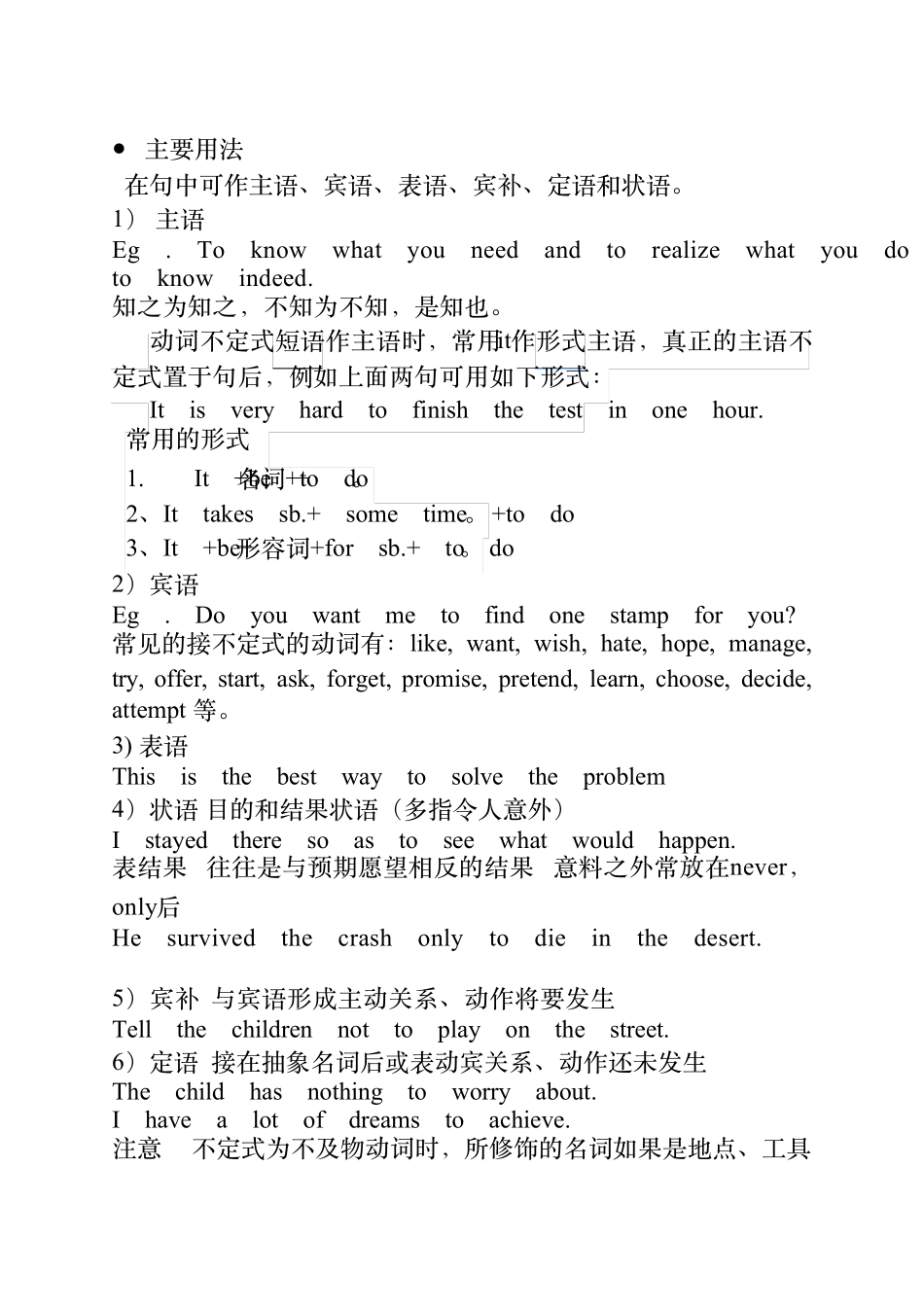⾮谓语动词详解 To see is to believ e. Seeing is believ ing. 概念:在句⼦中充当除谓语外的句⼦成分的动词形式叫做⾮谓语动词 ⾮谓语动词形式: 不定式:to do 现在分词( 动名词):v -ing 过去分词: done 谓语动词与⾮谓语动词区别与联系 1. 从形式上讲,谓语动词有四种:以动词do为例,动词原型为do、过去式为did、现在分词为doing和过去分词为done;⾮谓语动词也有四种:以动词do为例,不定式为to do;现在分词为doing、动名词为doing和过去分词为done。其中,现在分词和动名词现在统称为v -ing。 2 . 从语态上讲,谓语动词和⾮谓语动词都有两种,但表现形式不同。以动词do为例,谓语动词是:主动语态do和被动语态be done;⾮谓语动词是:主动语态,不定式to do,现在分词和动名词doing。被动语态,不定式to be done,现在分词和动名词being done和过去分词done。 3 . 从时态上讲,谓语动词有16 种时态:⽽⾮谓语动词因为最多有四种形式,只能代表⼗种时态注:因为不定式、现在分词和动名词都没有将来式,所以,就⽤其⼀般式代替将来式。 4 . 从结构上讲,谓语动词没有独⽴主格结构,⽽⾮谓语动词却有。1. to do 不定式的时态和语态 1)⼀般式 to do (主动) to be done (被动) 它所表⽰的动作,通常与主要谓语所表⽰的动作(状态)同时(或⼏乎同时)发⽣,或是在它之后发⽣ Eg . We are very glad to meet you again. (同时发⽣) Eg . They invited us to visit the United Stated soon. (不定式动作在谓语动作之后) 2) 进⾏式 to be doing (主动) Eg . He seems to be thinking deeply, without noticing me passing. 3)完成式 to have done (主动) to have been done (被动) Eg . I’m sorry to have given you so much trouble. 4)完成进⾏式 to have been doing Eg . She is said to have been writing the novel for years. 语 态 时 态主动被动to do ⼀般式to doto be done进⾏式to be doing/完成式to have doneto have been done完成进⾏式to have been doing/● 主要⽤法 在句中可作主语、宾语、表语、宾补、定语和状语。 1) 主语 Eg . To know what you need and to realize what you do not know is to know indeed. 知之为...


